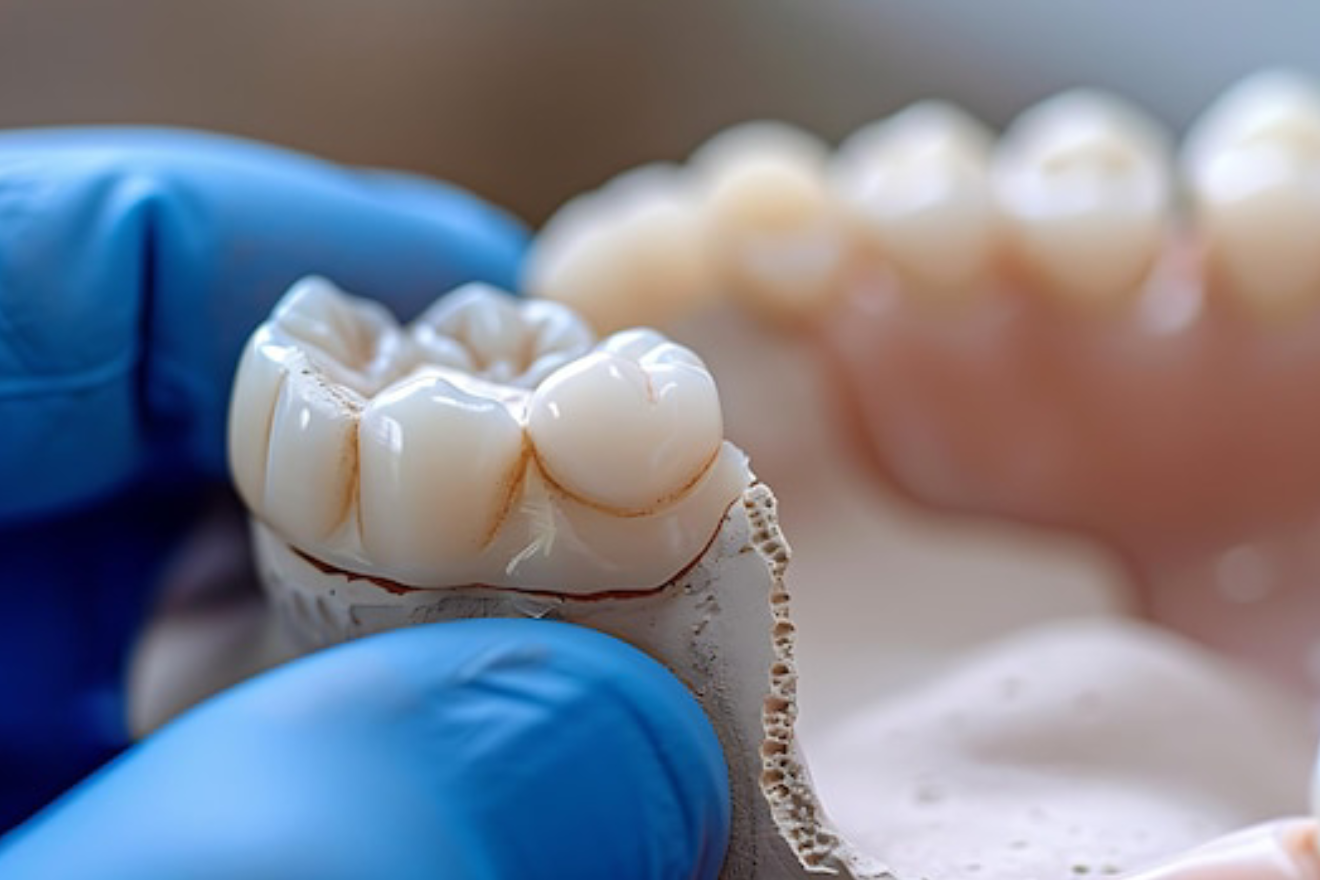Comprehensive Guide to Dental Bridges
Dental bridges are a popular and effective solution for replacing missing teeth, restoring both function and aesthetics to your smile. This restorative dental procedure involves creating a bridge of artificial teeth to span the gap left by one or more missing teeth. Here’s a detailed overview of dental bridges, including their purpose, types, procedure, and care.
What is a Dental Bridge?
A dental bridge is a prosthetic device designed to fill the space created by missing teeth. It typically consists of one or more artificial teeth (pontics) anchored to adjacent natural teeth or dental implants. The bridge helps restore the appearance and functionality of the mouth, allowing for normal chewing and speaking.
Reasons for Dental Bridges
- To Replace Missing Teeth: A dental bridge is used to replace one or more missing teeth, restoring your ability to chew properly and speak clearly.
- To Maintain Facial Structure: Missing teeth can cause changes in facial appearance, such as sagging of the cheeks. A bridge helps maintain the natural shape of your face.
- To Prevent Dental Shifting: When a tooth is missing, adjacent teeth can shift into the gap, leading to alignment issues. A bridge helps prevent this shifting and maintains proper bite alignment.
- To Improve Aesthetics: A bridge provides a natural-looking replacement for missing teeth, improving the overall appearance of your smile.
Types of Dental Bridges
- Traditional Bridges: Traditional bridges are the most common type and involve creating crowns for the teeth on either side of the gap, with a pontic (artificial tooth) in between. This type is ideal when the adjacent teeth are healthy and strong enough to support the bridge.
- Cantilever Bridges: Cantilever bridges are used when there are adjacent teeth only on one side of the gap. A crown is placed on the adjacent tooth, and the pontic extends into the gap. This type is less common and used in specific situations.
- Maryland Bridges: Maryland bridges use a metal or porcelain framework that is bonded to the back of the adjacent teeth. They are often used for replacing front teeth and require less alteration of the adjacent teeth compared to traditional bridges.
- Implant-Supported Bridges: Implant-supported bridges are anchored by dental implants rather than natural teeth. This type is used when the adjacent teeth are not suitable for supporting a bridge. Implants are surgically placed into the jawbone, providing a strong foundation for the bridge.
The Dental Bridge Procedure
- Initial Consultation: Your dentist will assess your oral health, take X-rays, and discuss your options for a dental bridge. They will determine the best type of bridge based on your specific needs.
- Tooth Preparation: If traditional or cantilever bridges are chosen, the adjacent teeth will be prepared by removing a portion of their enamel to accommodate the crowns.
- Impressions: Impressions of the prepared teeth and the gap will be taken to create a custom bridge. Digital impressions may also be used for greater accuracy.
- Temporary Bridge: A temporary bridge may be placed to protect the prepared teeth while the permanent bridge is being fabricated.
- Bridge Placement: Once the permanent bridge is ready, it will be fitted, adjusted for proper bite and alignment, and securely cemented in place. For implant-supported bridges, the procedure involves placing the implants and waiting for the bone to heal before attaching the bridge.
Aftercare and Maintenance
- Oral Hygiene: Good oral hygiene is essential for the longevity of your bridge. Brush and floss regularly, and use special flossing techniques or tools recommended by your dentist to clean around the bridge.
- Regular Check-Ups: Schedule regular dental check-ups to monitor the condition of the bridge and surrounding teeth. Your dentist will ensure that the bridge remains secure and address any issues that may arise.
- Dietary Considerations: Avoid chewing hard or sticky foods that could damage the bridge. Follow your dentist’s advice on maintaining a diet that is gentle on your dental work.
Potential Complications
While dental bridges are generally effective, some potential complications include:
- Bridge Loosening: The bridge may become loose over time, requiring adjustment or re-cementation.
- Tooth Sensitivity: The teeth supporting the bridge may experience sensitivity after the procedure.
- Damage to the Bridge: Although rare, the bridge can chip or break, necessitating repair or replacement.
Conclusion
Dental bridges are a valuable solution for replacing missing teeth and restoring both function and aesthetics. By understanding the types of bridges, the procedure, and the importance of proper aftercare, you can make an informed decision and ensure the long-term success of your dental restoration. Consult with your dentist to determine the best bridge option for your needs and follow their recommendations for optimal care and maintenance.


